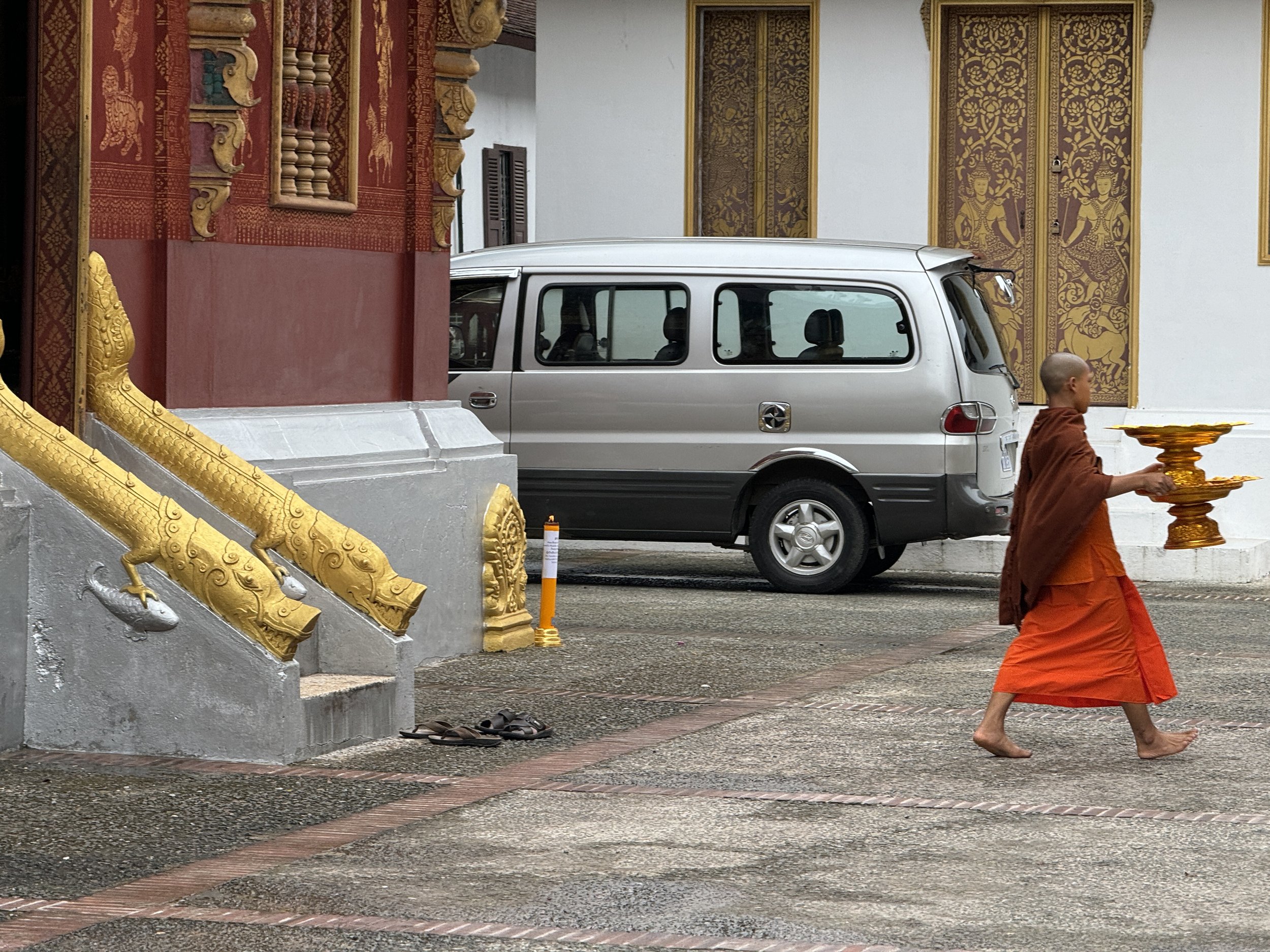Luang Prabang Alms Ceremony (Sai Bat)
Posted July 23
The ere is a longstanding buddhist tradition of sustaining monks via the giving of alms. Because monks are sequestered into their monasteries and don’t have outside employment, it is a common sight in SE Asia to see monks asking for alms.
In most places in SE Asia this is done by an individual or small group of monks making their morning rounds in the streets and stopping at restaurants or other places where people gather. Businesses and individuals give donations to the monks either with food such as a portion of sticky rice, sundries like a bar of soap, or money.
Monk performing duties at a temple
Monks and novices in SE Asia are treated with respect. Historically, like Christian monks in Europe, they were the literate class and held in high regard as the wise and well learned members of the community. Monks in SE Asia are given deferential treatment and the giving of alms takes on many forms like not being charged for public transportation. In a modern adaptation of these traditions, that also means that monks are allowed to board airplanes first before any other passengers.
Throughout my travels I have had the opportunity to speak to a number of former monks or novices. They have all quit the monastery in order to pursue other professions, chiefly in tourism or hospitality. In both Cambodia and Laos, especially from rural areas where public education may not have reached the villages yet, entering a monastery as a young boy is sometimes the only chance at an education. Unfortunately, there is no similar opportunity for young girls.
The former novices I’ve spoken to say that there’s more opportunities available now, especially with increased tourism. Speaking English is by far the most valuable skill to acquire and not something that is learned
Alms laid out and prepared for the ceremony
in the monastery. So while the novices may begin their education at the temple, they leave as soon as they can to take on a job that can help them learn to speak English.
One thing to note is that the monastery provides not just an education to young boys, but because they are given a place to stay and alms to feed themselves, it is one less dependent for a family to look after. Especially for rural subsistence farmers, that’s an important factor and some boys are taken to the monastery for the simple practical matter of family finances.
In Luang Prabang, there’s a morning ritual of having the monks parade down the street where a large number of temples are built, and citizens lining the street to give alms. This is an organized ceremony rather than the ad hoc method in other places where the monks individually seek alms.
The ceremony itself is treated as a religious ceremony by both the monks and the citizens. Prayer matts are laid out, the citizens sit or kneel, and the monks walk down the street stopping at each person who wishes to give alms. Both the monks and alms givers are completely silent throughout the
A processional of monks accepting alms
ceremony. The only time that changes is at the very end, when novices will gather to be led in a chant of thanks.
Rituals like this, and indeed the monkhood as a whole are disappearing. As more economic opportunities arise in SE Asia, it is more difficult to convince parents and boys that the monkhood is a viable alternative. The expansion of public education to more rural areas makes the monastery no longer the monopoly on education so it is much more likely that young boys will get a secular education.
Novices being lead in a chant of thanks
The Morning Alms Ceremony
Chant of Thanks and Blessing



